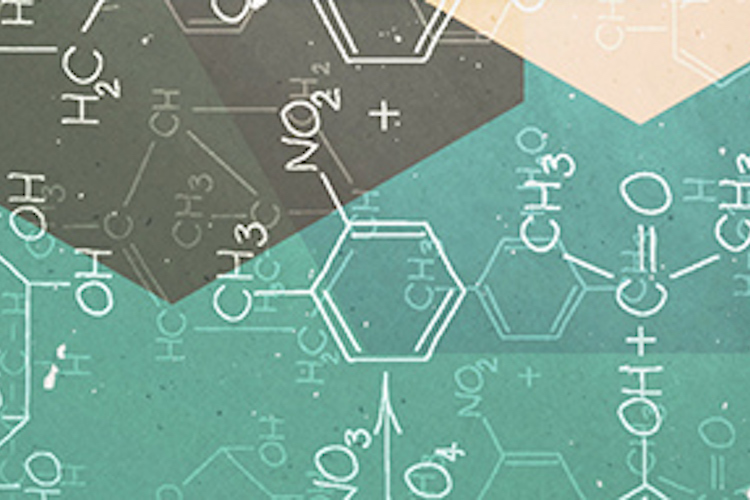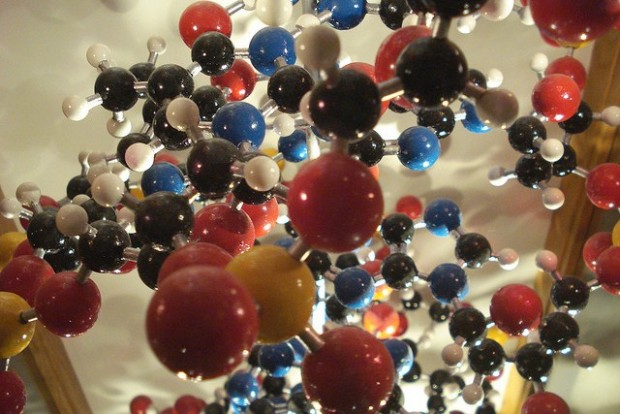Ice-like Phonons in Liquid Water Discovered
New research attempts to resolve the debate about water's structure

On January 23, 2015 Angewandte Chemie published a paper “Determination of Phase Stability of Elemental Boron” demonstrating which form of boron is the stable structure at room temperature. Before this work, two structures, α-boron and β-boron, were contenders, but it was not known which was more stable. We have asked leading author of this research Prof. Mary Anne White from Dalhousie University, to comment on this work.
The research was primarily experimental and was based on a chemical thermodynamic cycle. We synthesized a sample of α-boron and accurately determined its thermodynamic properties, in comparison with their parallel studies of β-boron.
The results show that β-boron is the more stable structure at ambient pressure, for all temperatures up to 2000 K. It is surprising that the β-boron structure is more stable than α-boron, because β-boron is not as dense and it has lattice positions for atoms that are only partially occupied. As a result, the entropy of β‑boron is non-zero at T = 0 K. No other element is known to exhibit residual entropy. From the thermodynamic analysis, we have shown that below 1000 K, β-boron is entropically stabilized with respect to α-boron due to its partially occupied sites. However, at higher temperatures β-boron is enthalpically stabilized with respect to α-boron due to substantial differences in the heat capacities of the two forms. Through collaboration with Tadashi Ogitsu at Lawrence Livermore National Lab, our team also showed that α-boron only becomes more stable than β-boron on application of pressure.

Boron is not found in its pure elemental form on earth, but it is a component of many useful compounds, found in aerospace technology, bulletproof vests and powerful tools. For example, boron nitride and boron carbide are the second and third hardest materials in the world. Only diamond is harder, but the boron compounds can be used at high temperatures where diamond would burn. These boron-containing materials are used as abrasives, in tank armor, and for tool bits and sandblasting nozzles. Borosilicate glass, which has only a very small coefficient of thermal expansion, can be heated and cooled without cracking; it goes under trade names such as Pyrex. Boron nitride nanotubes show promise for aerospace applications, taking advantage of strength, light weight and radiation shielding properties. Magnesium diboride is, surprisingly, a superconductor. Other borides have promise as thermoelectric materials that can covert waste heat into power. Therefore, it is important to understand the basic properties of boron in order to make better predictions concerning properties of boron-containing materials.
I became especially interested in boron when I read a 2009 paper in Nature about a new high-pressure form of boron that is (surprisingly) ionic. I already knew that boron has unique three-centre two-electron bonds, but that paper revealed another fascinating fact: it was not known which form of boron was stable at room temperature and pressure. I developed a plan to answer this question, using fundamental thermodynamics, a field that has held my attention for more than 30 years. Similar questions had been answered for other elements, such as carbon (with graphite and diamond structures), many years ago but the experiments required for boron have been more challenging. In particular, high accuracy measurements are required and formerly this had required a large amount of sample, typically 100 g, impossible for rare α-boron. But recent developments in calorimetry now make it feasible to carry out experiments on very small samples (a few mg) with the accuracy required to determine small differences between large numbers in thermodynamic cycles.
There are still mysteries about elemental boron to unravel. In particular, the heat capacity at high temperature is very high, above the classical Dulong-Petit limit, indicating an exceptionally anharmonic lattice, especially for α-boron. Accurate boron-boron potentials need to be developed to explain this finding.
With this research, we’re providing an underpinning for better understanding of many materials and we’re adding to the fundamental knowledge that’s necessary for the advancement of many technologies and industries. All matter is made of elements and there are only about 90-some naturally occurring elements, with about 30 with high abundance. Finding out something new about an important element is amazing and significant.

New research attempts to resolve the debate about water's structure

Researchers finally established the stable allotrope of the fifth element under normal conditions

On the the evolution of the ribosome, the central dogma of molecular biology, and what lies beyond the root of...